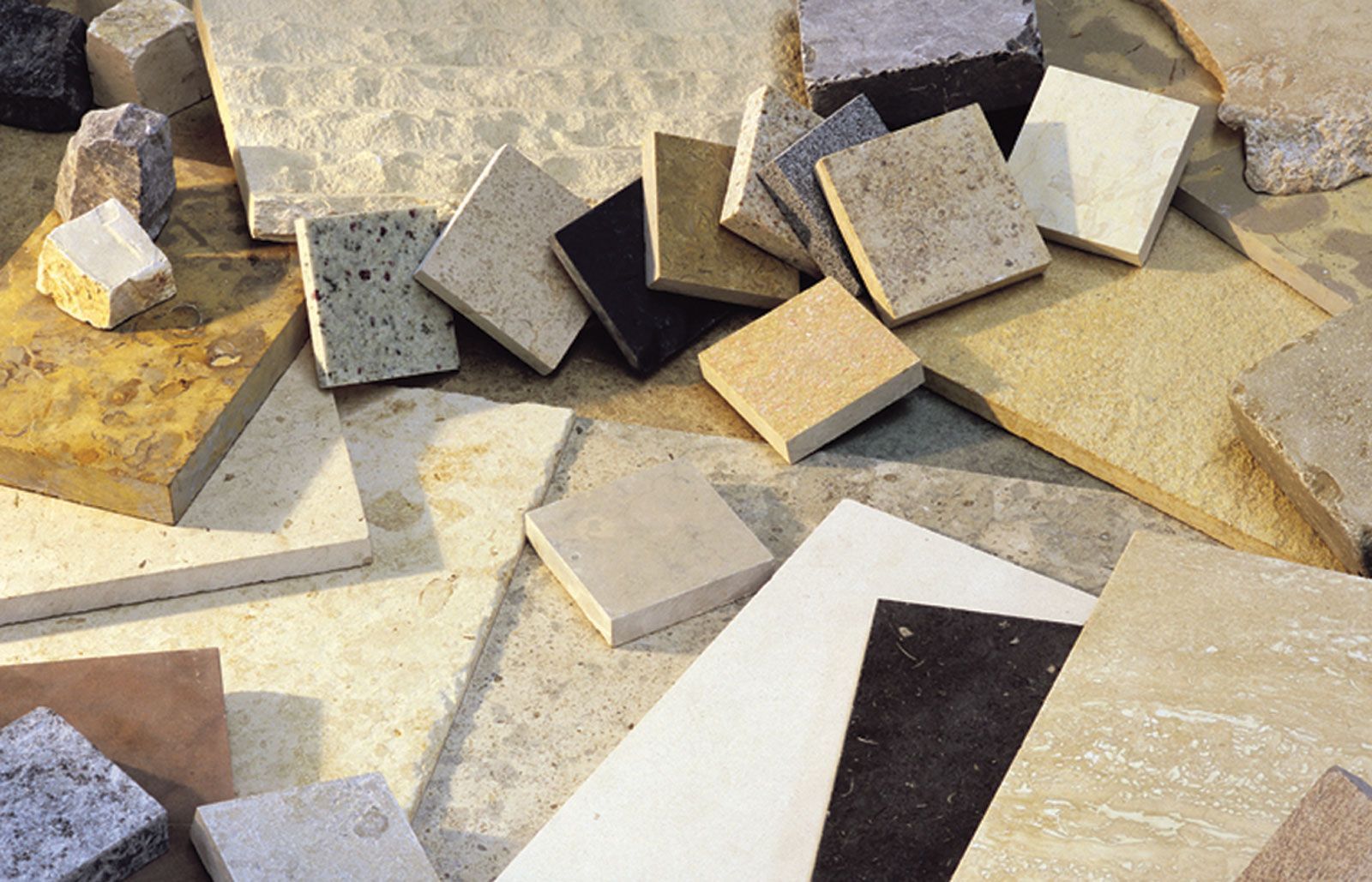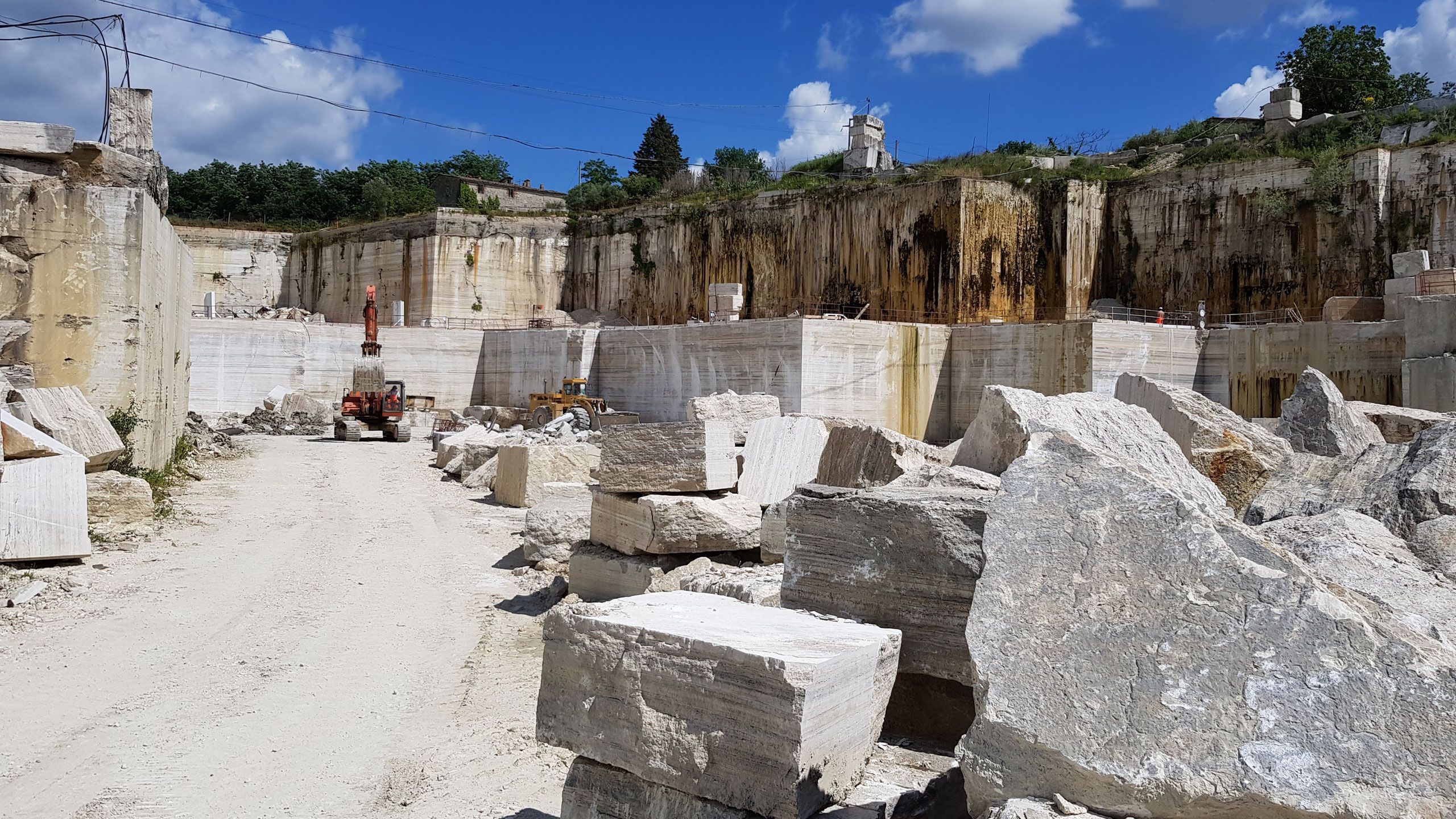Geological Rock Types
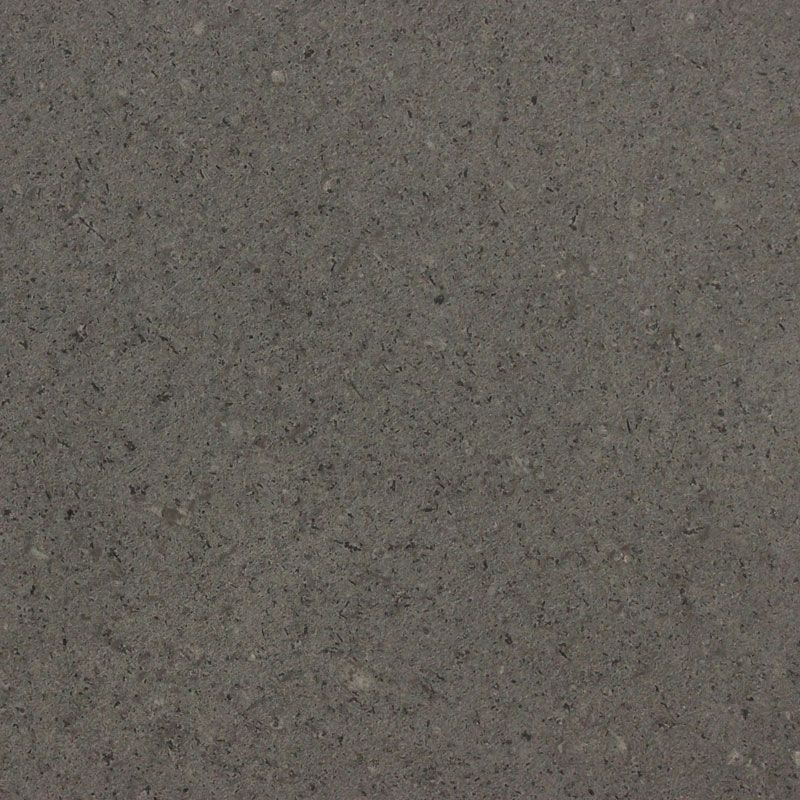
Basalt is a common extrusive volcanic rock. It is usually grey to black and fine-grained due to rapid cooling of lava at the surface of a planet. It may be porphyritic containing larger crystals in a fine matrix, or vesicular, or frothy scoria. Unweathered basalt is black or grey.
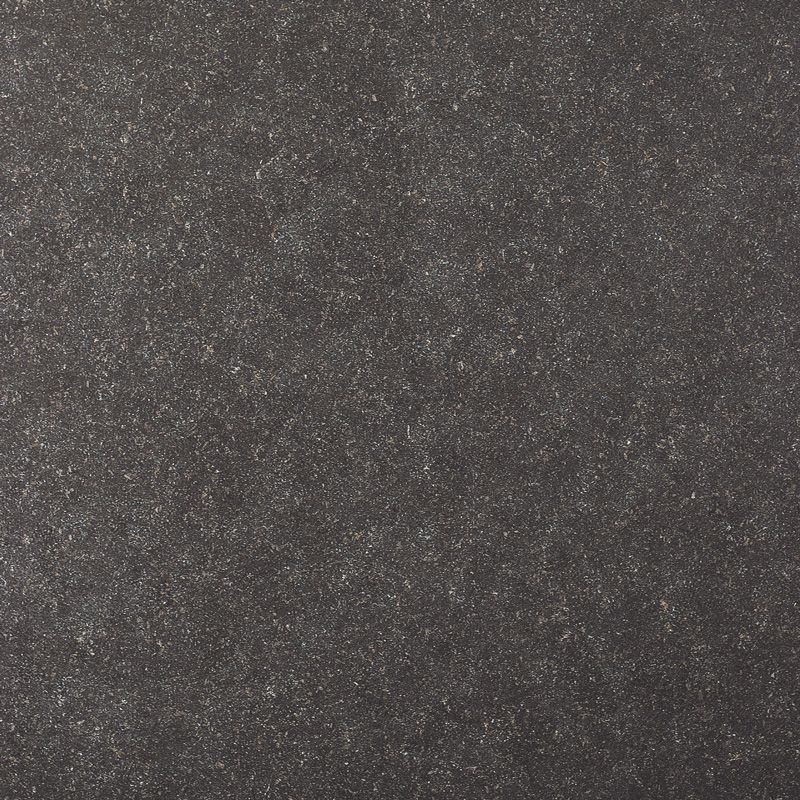
Granite is a common and widely occurring type of intrusive, felsic, igneous rock. Granite usually has a medium- to coarse-grained texture. Occasionally some individual crystals (phenocrysts) are larger than the groundmass, in which case the texture is known as porphyritic. A granitic rock with a porphyritic texture is sometimes known as porphyry. Granites can be pink to grey in colour, depending on their chemistry and mineralogy. By definition, granite is an igneous rock with at least 20% quartz by volume. Granite is usually found in the continental plates of the Earth's crust.
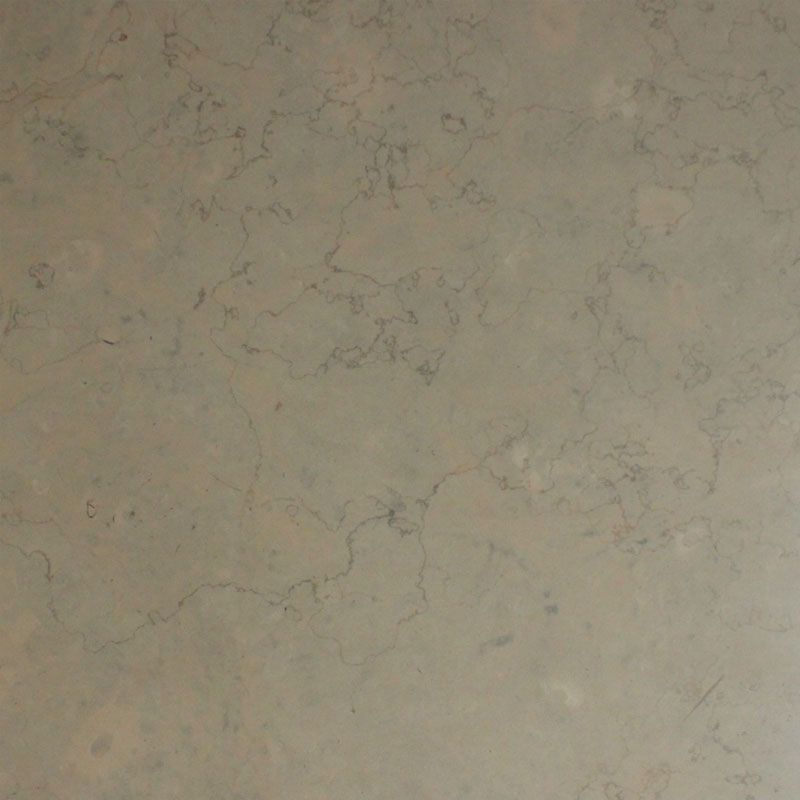
Limestone is a sedimentary rock composed largely of the minerals calcite and aragonite, which are different crystal forms of calcium carbonate. Like most other sedimentary rocks, limestone is composed of grains; however, most grains in limestone are skeletal fragments of marine organisms such as coral or foraminifera. Other carbonate grains comprising limestones are ooids, peloids, intraclasts, and extraclasts. These organisms secrete shells made of aragonite or calcite, and leave these shells behind after the organisms die.
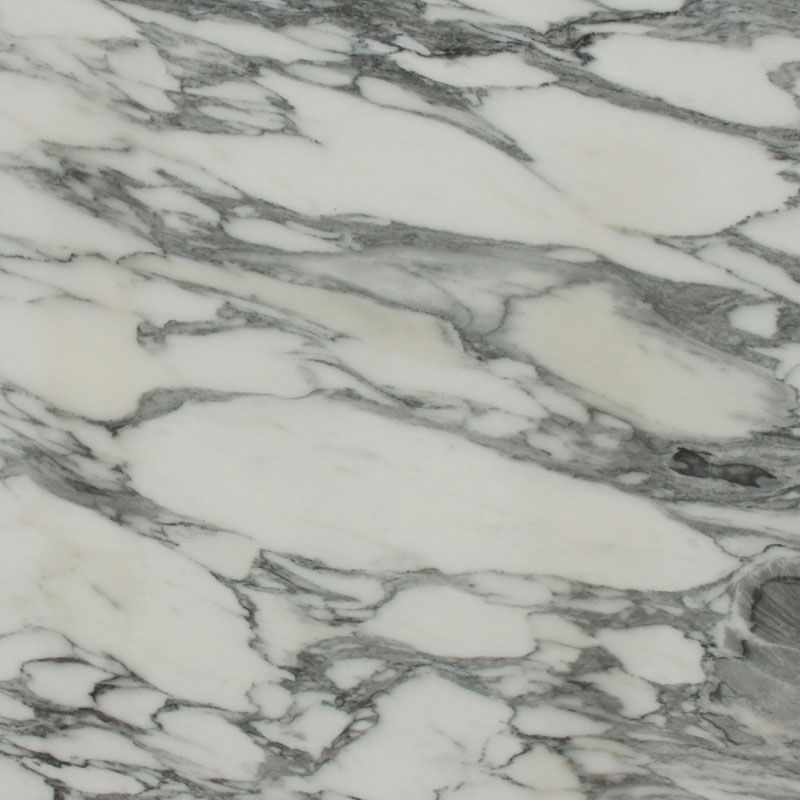
Marble is a rock resulting from metamorphism of sedimentary carbonate rocks, most commonly limestone or dolomite rock. Metamorphism causes variable recrystallization of the original carbonate mineral grains.
The resulting marble rock is typically composed of an interlocking mosaic of carbonate crystals. Primary sedimentary textures and structures of the original carbonate rock (protolith) have typically been modified or destroyed.
Pure white marble is the result of metamorphism of a very pure (silicate-poor) limestone or dolomite protolith. The characteristic swirls and veins of many coloured marble varieties are usually due to various mineral impurities such as clay, silt, sand, iron oxides, or chert which were originally present as grains or layers in the limestone.
Green coloration is often due to serpentine resulting from originally high magnesium limestone or dolostone with silica impurities. These various impurities have been mobilized and recrystallized by the intense pressure and heat of the metamorphism.
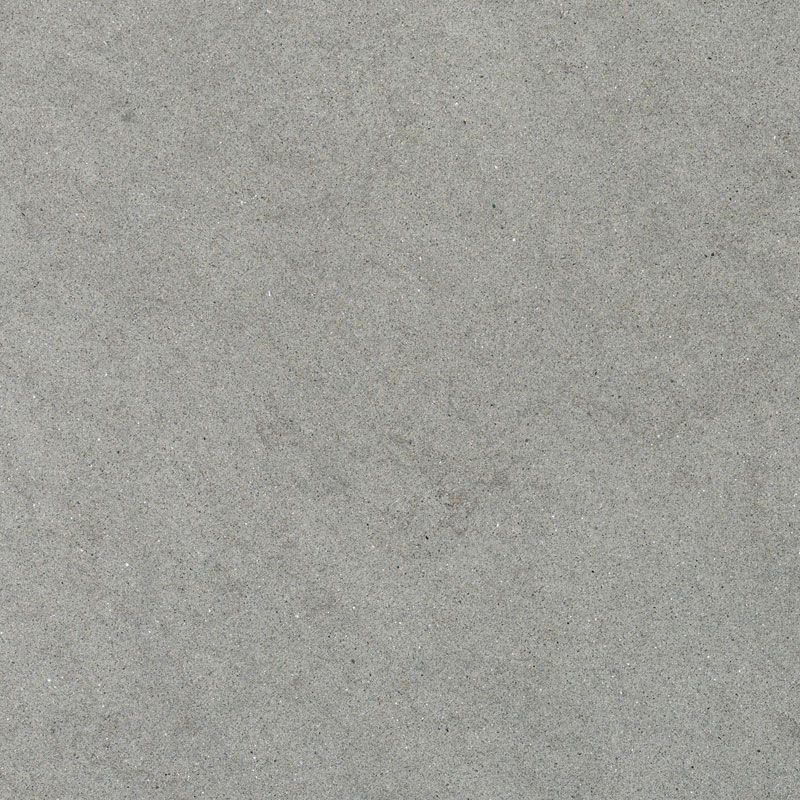
Sandstones are clastic (composed of other rocks) in origin (as opposed to either organic, like chalk and coal, or chemical, like gypsum and jasper). They are formed from cemented grains that may either be fragments of a pre-existing rock or be mono-minerallic crystals. The cements binding these grains together are typically calcite, clays, and silica. Grain sizes in sands are defined (in geology) within the range of 0.0625 mm to 2 mm (0.002–0.079 inches). Clays and sediments with smaller grain sizes not visible with the naked eye, including siltstones and shales, are typically called argillaceous sediments; rocks with greater grain sizes, including breccias and conglomerates are termed rudaceous sediments.
The formation of sandstone involves two principal stages. First, a layer or layers of sand accumulates as the result of sedimentation, either from water (as in a stream, lake, or sea) or from air (as in a desert). Typically, sedimentation occurs by the sand settling out from suspension; i.e., ceasing to be rolled or bounced along the bottom of a body of water or ground surface (e.g., in a desert or erg). Finally, once it has accumulated, the sand becomes sandstone when it is compacted by pressure of overlying deposits and cemented by the precipitation of minerals within the pore spaces between sand grains.

The most common sizes are 400 x 400 mm, 600 x 400m, 800 x 400mm and 600 x 600mm, though with a suitably large order Stone Age will supply stone in any size. We offer a range of flooring patterns.
